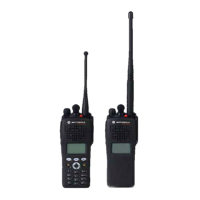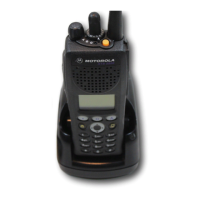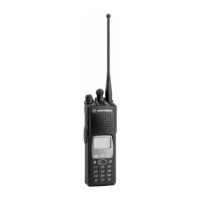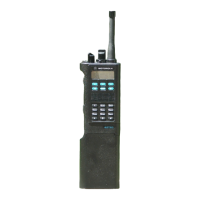Basic Theory of Operation
9
synthesizer/prescaler IC, which controls the VCO buffer for VHF. The VCO buffer,
actually generates the first LO and transmit-injection signals and buffers them to
the required power level. The synthesizer/prescaler circuit module incorporates
frequency-division and comparison circuitry to keep the VCO signals stable. The
synthesizer/prescaler IC is controlled by the microcontrol unit through a serial bus.
For the VHF band, the receiver back end consists of a three-pole crystal filter and
the digital back-end IC. The crystal filters are wide enough to accommodate 4 kHz
modulation. Final IF filtering is done digitally in the DSP.
The digital back-end IC consists of an amplifier, the second mixer, an IF analog-to-
digital converter, a baseband down-converter, and a 2.4 MHz synthesis circuit to
provide a clock to the DSP-support IC on the VOCON circuitry. The second LO is
generated by discrete components external to the IC. The output of the digital
back-end IC is a digital bit stream that is current driven on a differential pair for a
reduction in noise generation.
The transmitter consists of an RF driver IC that gets an injection signal from the
VCO and a final-stage power amplifier. Transmit power is controlled by a power-
control IC that monitors the output of a directional coupler and adjusts PA control
voltages correspondingly. The signal passes through a RX/TX switch that uses PIN
diodes to automatically provide an appropriate interface to transmit or receive
signals. Antenna selection is done mechanically in the control top.

